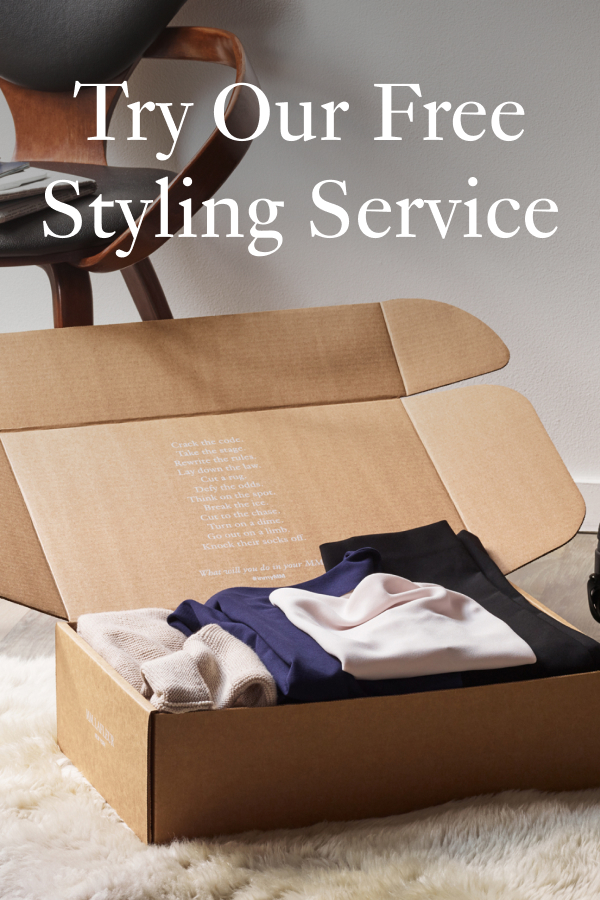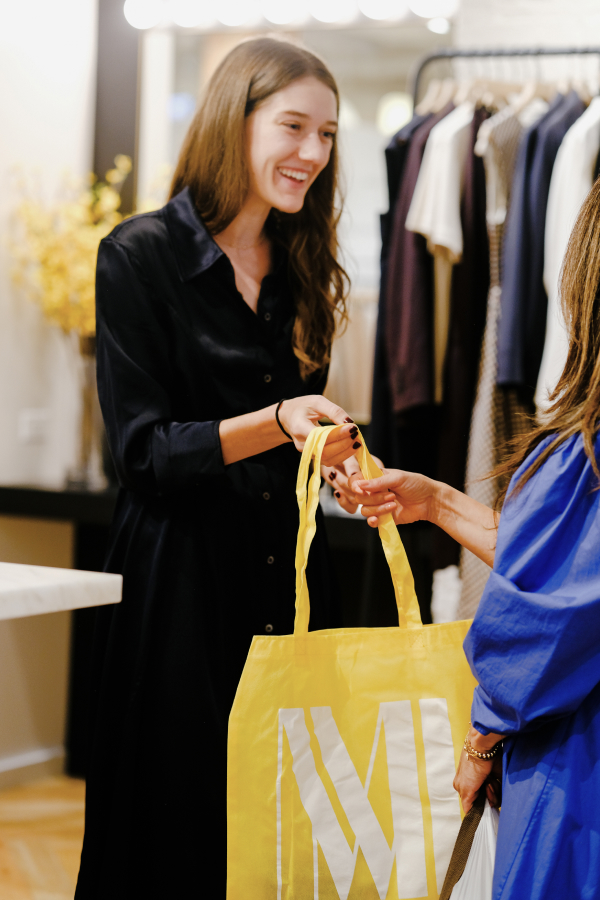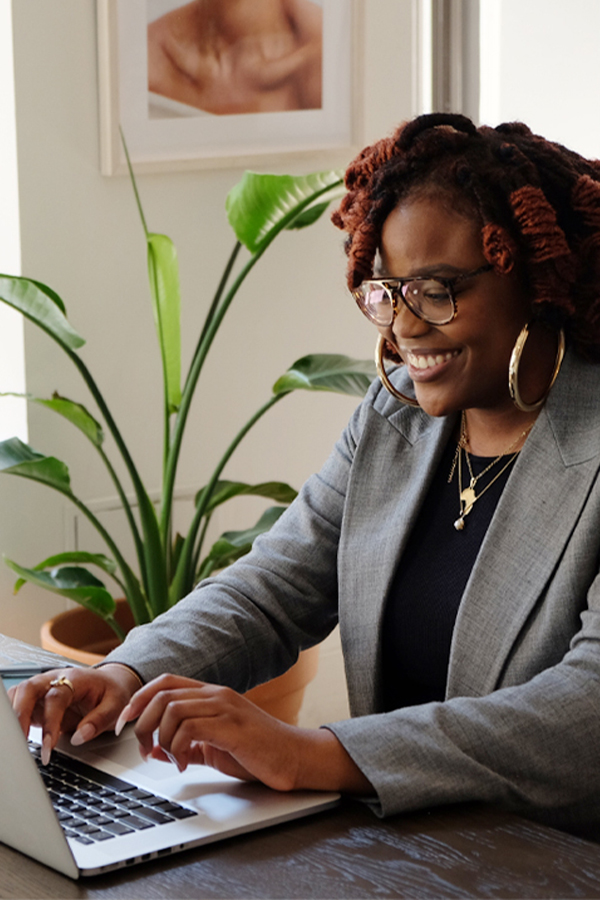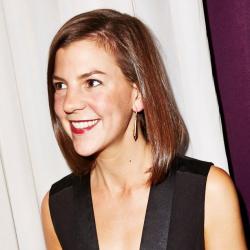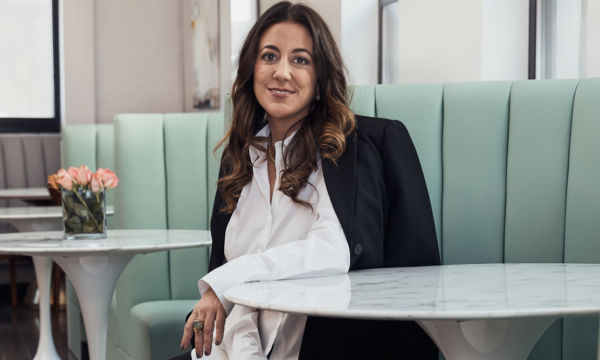Allison Esposito Medina On The Perks Of Confronting Failure
July 26, 2019 | Filed in: Woman of the Week
Allison Esposito Medina founded Tech Ladies, a community of women in the tech field, entirely by accident. In 2015, she was looking for an easier way to keep in touch with her professional network, and started holding weekly coffee meet-ups with her friends in the industry. By the following year, the group had gotten so big that she left her cushy job at Google and threw herself into running it full time. Now, the Tech Ladies community is 50,000 strong and offers webinars, job listings, support groups, and access to other tools that help women grow their careers in tech. We recently spoke with Allison about the transition from corporate life to self-employment, avoiding work-from-home pitfalls (it’s all about time blocking), and how getting fired—twice!—helped her make the leap to entrepreneurship.
MY DAD GOT OUR FIRST HOME COMPUTER when I was a kid. It was in our dining room, and we all had to share it. We didn’t have a lot of money to buy things like that, so my dad actually rented it at first. He felt that it was important for us to learn about technology and have access and exposure to it. This was the early ‘90s, and he just made it fun. To my brother and me, that computer was the coolest toy, even though it did practically nothing.
IN GRADE SCHOOL, WE WERE GIVEN THE OPTION to either go play outside or have computer time, and I was always the only one who chose the computer. I was genuinely interested in it, but I was also unathletic and an introvert, so the computer was much more appealing. I didn’t see computers or tech as gendered at all.
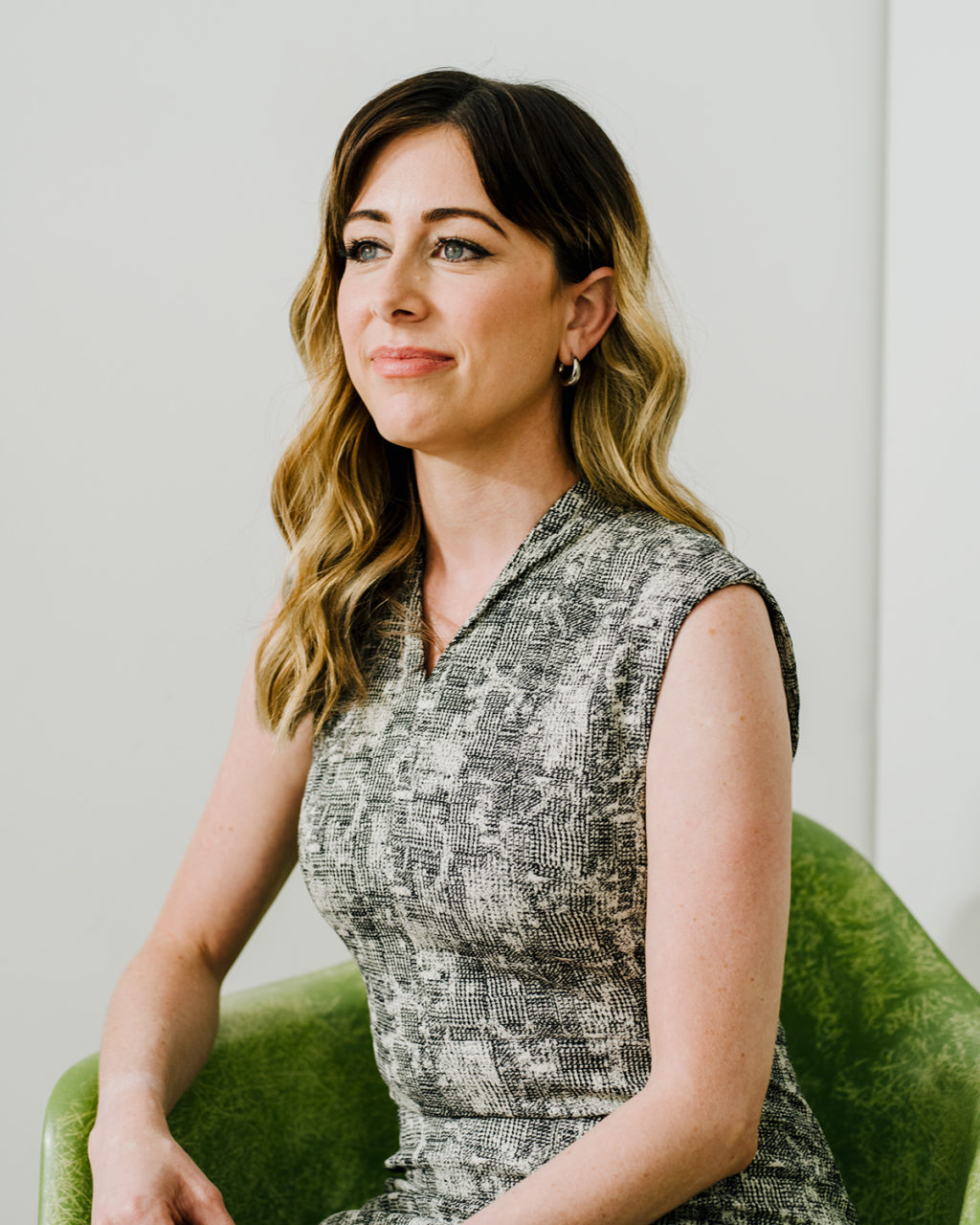
Allison wears the Aditi dress.
AS MUCH AS I WAS INTERESTED IN TECHNOLOGY, I never thought I’d have a career in it. I studied journalism in college and graduate school. Then I graduated in 2008, at the height of the financial crisis, and I needed to pivot. I did a bunch of different jobs, first at nonprofits and then for an assemblywoman as her communications director, which I loved. But eventually, I realized that I needed to do something that was going to be more sustainable for my life and help me pay back my student loans. In 2012, I started doing a side gig with some coders and designers who were releasing apps. They were friends of mine, and I offered to write all the copy and marketing materials for them. That was my foot in the door with tech. I thought it was really fun, so I put together a portfolio of my work and started looking for jobs.
MY FIRST REAL TECH POSITION was at FourSquare, which was a big leap from the communications world. At the time, it was a young startup environment, with 100 or so people on the team. It seemed huge to me, and I was writing copy across every category, from marketing to product and design and everything in between. Like, when you open the app, what does the button say? How do you explain to users where to look and what to click on? That role gave me a bird’s eye view of the company. I listened to what users were saying, what they wanted, what they were confused by. I sat in on all sorts of internal meetings. And then I was writing actual copy, putting words out into the world that were seen by a lot of people. It was a cool job.
STUDYING JOURNALISM AND WORKING IN COMMUNICATIONS taught me how to talk to anyone. I’m naturally a little shy, so being able to walk into a room and ask people tough questions was big for me. I also learned how to communicate effectively. I know what makes people glaze over and what words stand out. Those skills are widely applicable.
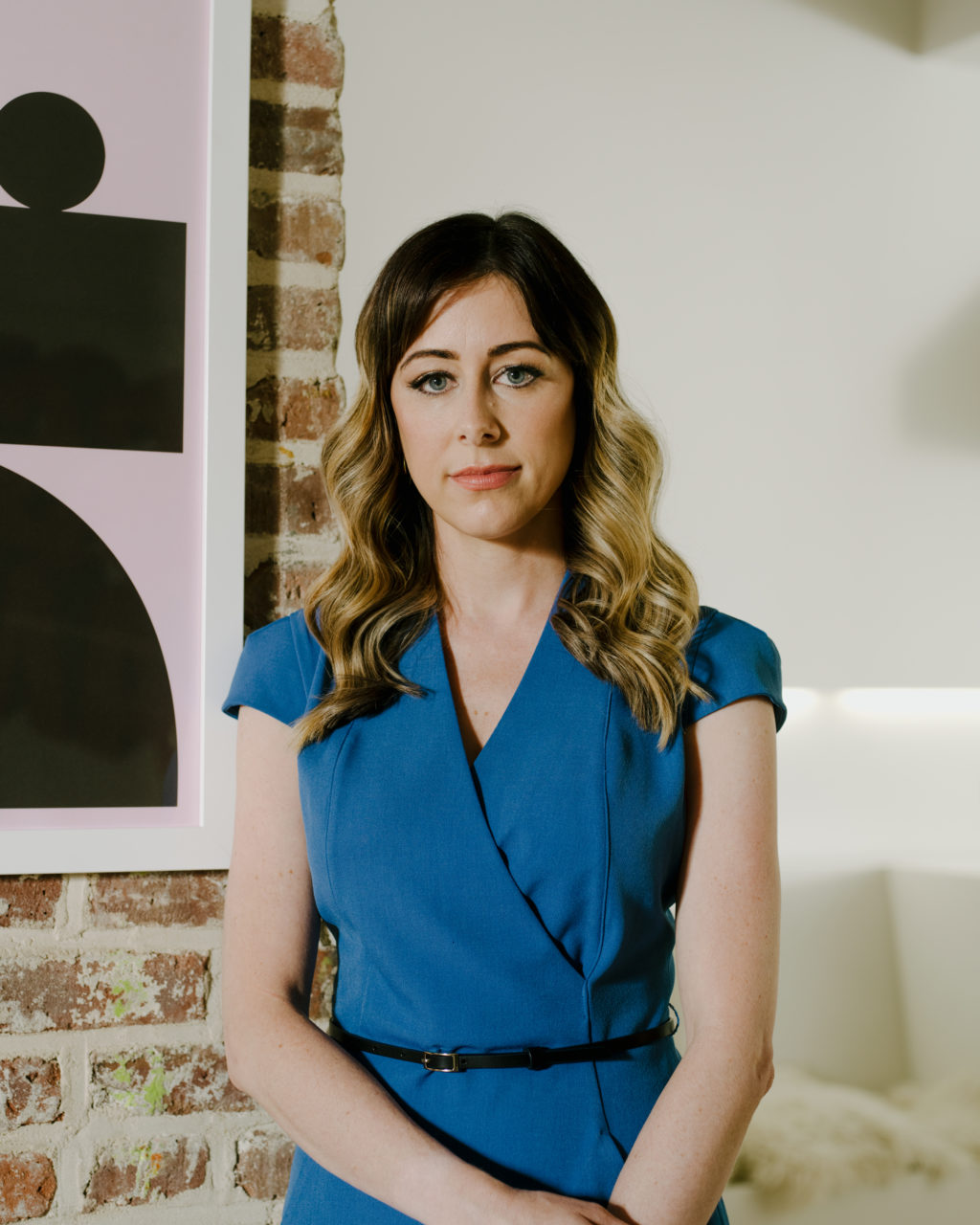
Allison wears the Felisa dress.
AFTER FOURSQUARE, I WENT TO A SMALLER STARTUP called Oyster. The team was about 30 people, and it had all the great things about a tech startup—we were rapidly learning and trying new ideas. I was also making a lot of connections with women in the tech world, and I wanted to keep them up without having to do too much. So I organized a coffee for the women in tech who I knew in New York. We started meeting regularly on Friday mornings, to exchange tips and stories about working in the industry. We also talked about things we were struggling with in our jobs, and that made me realize that a lot of women are hurting at work. It wasn’t just me, struggling with an isolated issue.
THIS WAS BACK IN 2015, before #MeToo and #TimesUp. Those types of conversations were only happening on the whisper-network level. Like, “Oh, this is a bad startup and this is a good one,” or, “This guy’s a good boss and this guy’s a bad one.” I had been sexually harassed at one of my earlier jobs, and I thought that maybe the tech world would be different, because it’s full of idealistic people. When I talked to more women and found out that this wasn’t the case, I was so disappointed. And then I realized, Oh, wait. It’s not just me. I didn’t just have one bad boss or two bad experiences at work. It’s happening to many women, and this is bigger than I thought.
I ALSO DISCOVERED THE POWER OF COMMUNITY TO HEAL those experiences, and I continue to watch that now. Someone will join our online community and say, “This horrible thing happened to me at work.” And they will get hundreds of really strategic, supportive comments on how to tackle the issue. It’s been surprisingly scalable, how many people are willing to help each other, especially women but also men. Many men in tech have given me invaluable support. There’s a lot of good out there to counteract the toxic stuff.
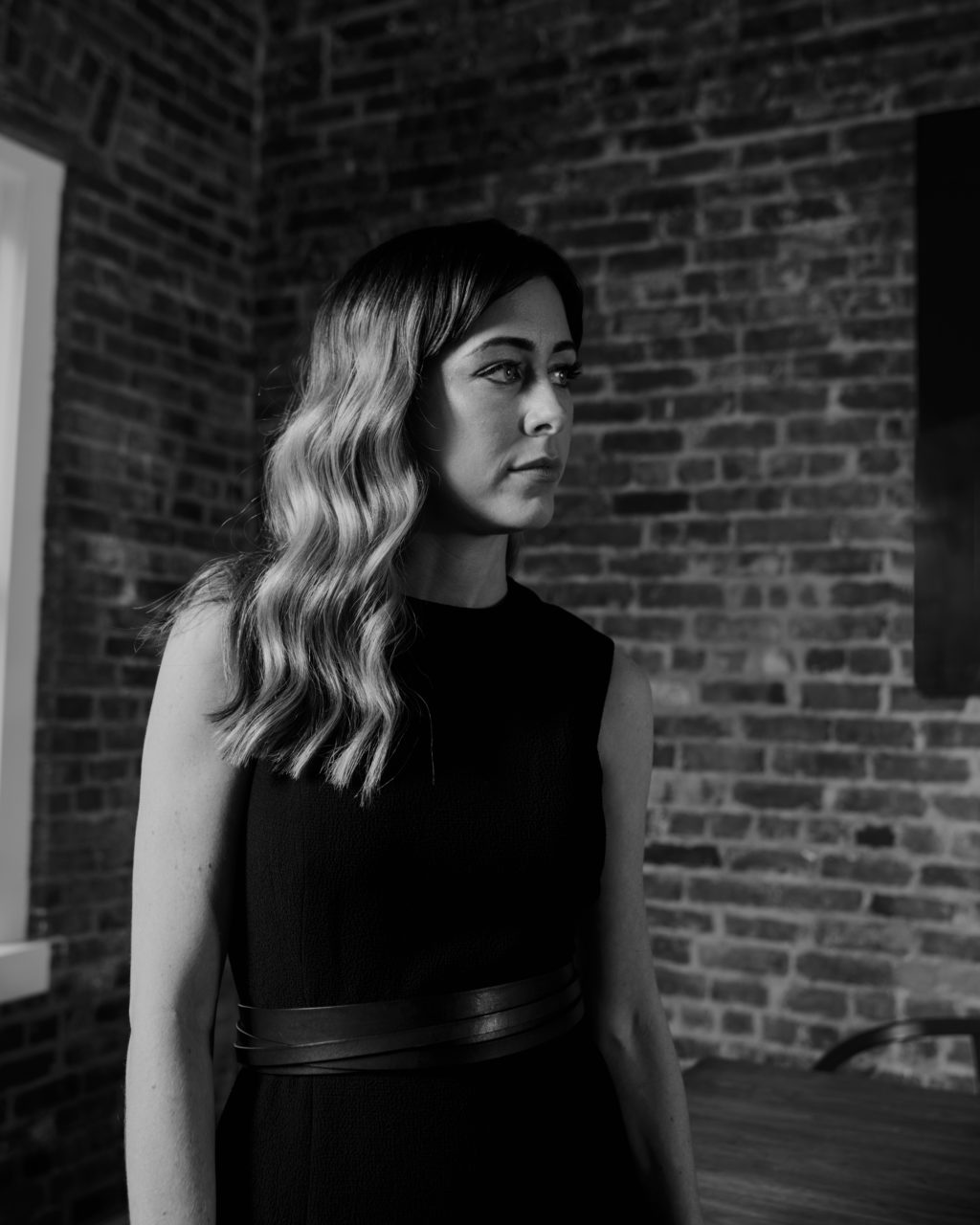
Alliosn wears the Jane dress and the Crossover belt.
FROM 2015 TO 2016, OUR MEETUPS KEPT GETTING BIGGER. People just kept inviting more women every week, so we formed a Facebook group to keep everyone in touch. It started out as just a couple hundred people, and now it’s 35,000. I also created a newsletter, and the rate of growth was really strong. I had worked with large marketing budgets at big companies and we were outpacing those numbers with nothing. That’s when I realized we could actually create some structure around the community and its needs, from a business perspective. For example, people were sending us a lot of job postings. So we said to companies we knew, “If you want to post a job, we have this newsletter where you can do that, and we’ll charge you a little bit of money for it.” That was the first business decision we made.
AT THAT POINT, I was running all of this as a fun side project. Then the startup where I worked got acquired by Google, so I went to work there. But it soon became clear that I couldn’t do both. I would come home from my job at Google every day and work on Tech Ladies from about 5:30 p.m. to midnight. The tipping point came when I was having to say no to really great opportunities to grow Tech Ladies even more. So I finally left my job in 2016.
I HAVE BEEN FIRED TWICE IN MY LIFE, and both experiences were traumatic. I had to dig deep and live with this sense of rejection. I also didn’t meet my husband until I was 32, and I had gone through a lot of romantic failures before that. So by my mid-30s, I had a pretty thick skin for losing. That’s the biggest part of what enabled me to take a risk and go out on my own. I already knew that if I lost a relationship, I’d be okay. If I lost a job, I’d be okay. So if I started a company and it failed, I knew I’d be okay. Those painful things that happened to me ultimately enabled me to take the next step.
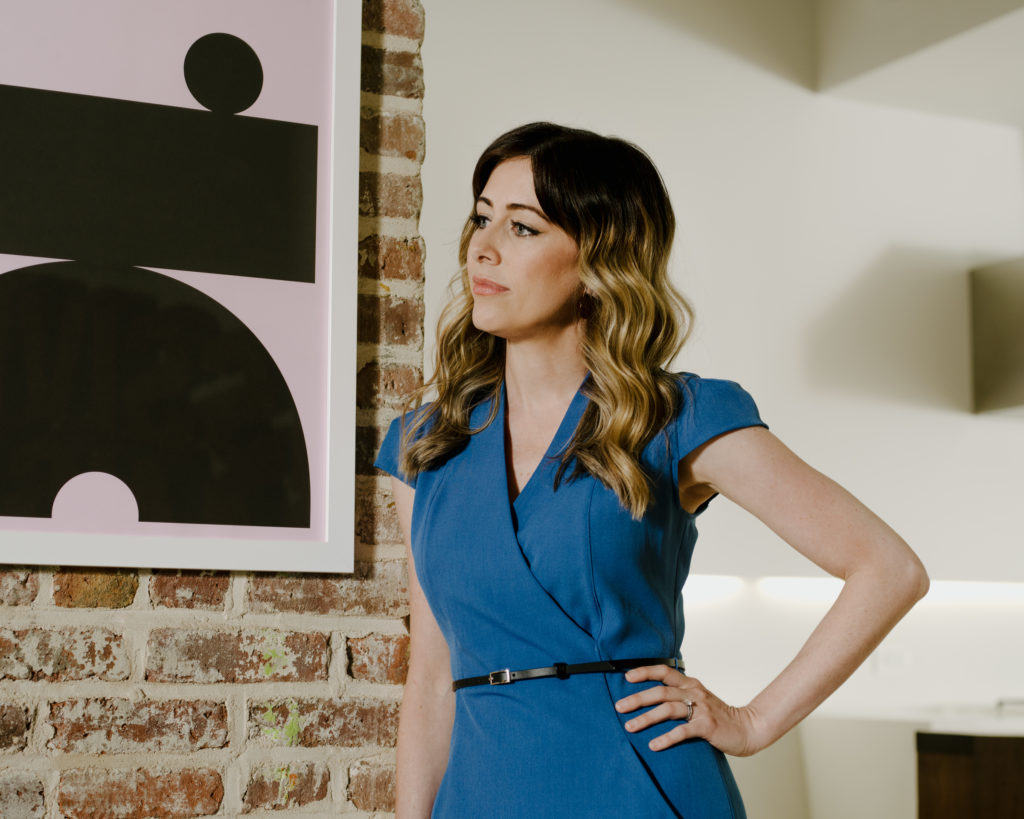
Allison wears the Felisa dress.
IF I HAD TO SUMMARIZE BOTH OF MY FIRING EXPERIENCES, what ties them together is that I don’t have imposter syndrome. I’ve always been a go-getter, and it doesn’t always jibe well with bosses, male bosses in particular. It also put a scarlet letter on me at certain jobs, especially where people wanted me to be a cog in the machine and make them look good by making myself small and hiding my ideas. It’s just not my personality. And it pisses me off, because that’s the kind of behavior that gets men promoted and women fired. I see it all the time, across different industries. Gender-based discrimination is real, and it causes companies to lose money and people to lose their livelihoods.
MY FIRST TWO YEARS OF RUNNING TECH LADIES FULL TIME, I had no balance in my life. I worked 14 hours a day, seven days a week. I know that can be dangerous and lead to burnout, so I try not to romanticize it. It also wasn’t great for me personally. But I was in a unique position in my life where I was able to do that—I don’t have kids yet, for example—so I did. Since then, I’ve learned how to ask myself, What are the unique things that only I can do? There’s really only a few of them, and I can delegate the rest. Actually having enough money to make those hires has taken time, but we now have 10 people on the team. And as soon as I feel like I have a good grasp on something, I train somebody else on it, hand it to them, and tell them to do it their way.
FOR THE PAST THREE YEARS, I’ve been experimenting with every version of a schedule you can imagine. Right now I’m into time blocking. I put all my meetings on one or two days, so that the other days are concentrated work time when I’m not running out to talk to people. That’s really helped me stay organized.
SEPARATING WORK TIME FROM NON-WORK TIME IS REALLY HARD. When I started out, I did what I think a lot of people do, which is think, “Cool, I can take a yoga class at noon and then I’ll just work on my emails at 8:00 p.m.” I would just ask myself, “What am I good for in this moment?” And then I could say, “Okay, this is a moment where I’m up for answering this slew of emails.” Or, “This is a moment where I’m up for doing some deep work.” Or, “This is a moment where I can’t do anything and I’m going to let myself watch a movie in the middle of the day.” I did all sorts of weird stuff. But ultimately, I learned that I need more structure. Now, I look ahead at the week every Sunday and I plan when I’m going to take meetings, when I’m going to do my deep work, and when I’m going to work out. I also recently started trying to stop work at 6:00 p.m. My phone addiction was really bad, and I wasn’t sure how much I was actually accomplishing. Of course, if I have a late meeting, I’ll occasionally pop on email. But now, for the most part, I can largely not work on nights and weekends. It took two and a half years of working seven days a week to get there.
Photographs by Heather Sten. Styling by Liz Young.


